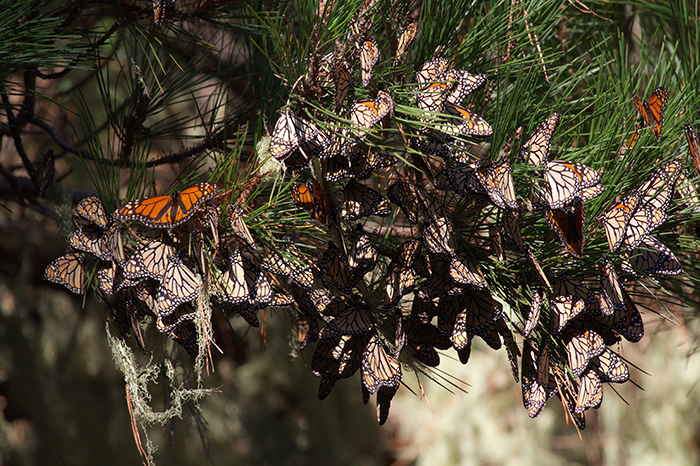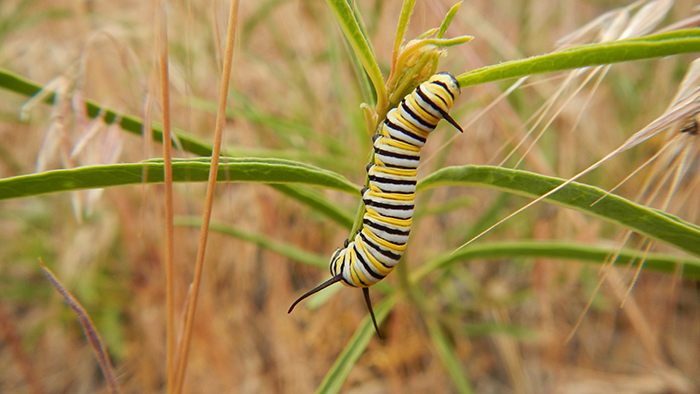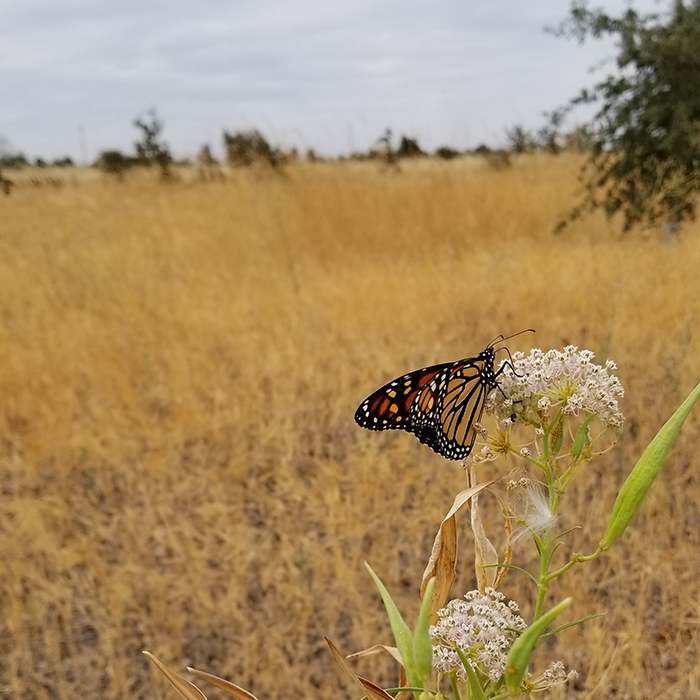By Justin Fritscher
justin.fritscher@wdc.usda.gov
The monarch butterfly – the iconic black-and-orange butterfly known for its epic migrations – has seen significant population declines since the 1980s. But unfortunately, the butterfly’s western population found west of the Rocky Mountains has hit an all-time low, an 85 percent dip between 2017 and 2018.
“With this abrupt one-year decline, the western monarch population is now less than one percent of what it was in the 1980s,” said Mace Vaughan of the Xerces Society for Invertebrate Conservation, the group who spearheads annual counts of monarchs wintering in coastal California.
“To give monarchs the best chance of recovery, we need to get nectar plants into the ground to sustain the remaining butterflies, and milkweeds to feed their caterpillars,” he added.

Farmers for Monarchs
And who are some of the best people poised to help the monarch’s western population? Farmers and ranchers, especially those in California, Oregon, Washington, and Idaho.
Farmers and ranchers can use a variety of conservation practices on their land to help the species, and USDA can help plan conservation practices as well as cover part of the cost for adopting them. Additionally, while these practices benefit monarchs, they can also improve agricultural operations.
Through a variety of conservation practices, NRCS helps producers improve management of healthy stands of milkweed and high-value nectar plants and protect these stands from exposure to pesticides. Learn more about available conservation practices.
Migration and Milkweed
While many factors have contributed to the species’ decline, one is the decrease in native plants like milkweed, the sole source of food for monarch caterpillars. They also need high-nectar flowers to fuel their migrations. In the West, they make their annual pilgrimage to spend winters along the coasts of California and the Baja Peninsula.
Planting native milkweeds is critically important to rebuild the western monarch population, but scientists at the Xerces Society recommend that milkweed not be planted within five miles of overwintering sites near the coast. It did not typically occur here and may prevent returning monarchs from going into their winter clusters.

What Can You Do Now?
Visit with USDA’s Natural Resources Conservation Service on how you can make your farm, ranch or forest friendlier to monarchs. Simple tweaks on how you manage your working lands – including which plants you integrate into your conservation practices – can yield big benefits for monarchs.
Right now, NRCS recommends California producers to start establishing high-value nectar plants that bloom in the fall, late winter and very early spring, which will provide fuel before and after the butterfly’s migration to winter sites. Fall-blooming species include goldenrod and asters, and late winter species include coyote brush, manzanitas, and native California lilac.
And elsewhere in the West, especially Idaho, eastern Oregon, and eastern Washington, NRCS recommends a focus on common native milkweed species, such as showy and narrow-leaf milkweed, as well as summer and fall-blooming nectar plants. Important fall-blooming species include goldenrod, rabbitbrush, and goldentop. Summer species include yellow spiderflower, native sunflowers, and giant hyssop. More options to consider can be found here.
NRCS helps producers plan and implement through the Environmental Quality Incentives Program and other Farm Bill-funded programs. NRCS accepts applications for conservation programs on a continuous basis. Producers interested in assistance are encouraged to contact their local USDA service center.

Farmers and ranchers can make simple tweaks on their working lands to provide quality habitat for monarchs. Photo courtesy of the Xerces Society.
Additional Resources
- Jan. 28, 2019 News Release: Assistance Available for California Producers to Aid Declining Monarch Butterfly
- Feb. 1, 2019 News Release: Assistance Available for Idaho Producers to Aid Declining Monarch Butterfly
- Farming for Monarch Butterflies multimedia story
- Working Lands for Monarch Butterflies fact sheet – Nationwide
- Monarch Butterfly Nectar Plant Lists for Conservation Plantings (from Xerces)
- Save Western Monarchs website (from Xerces)

Leave a Reply